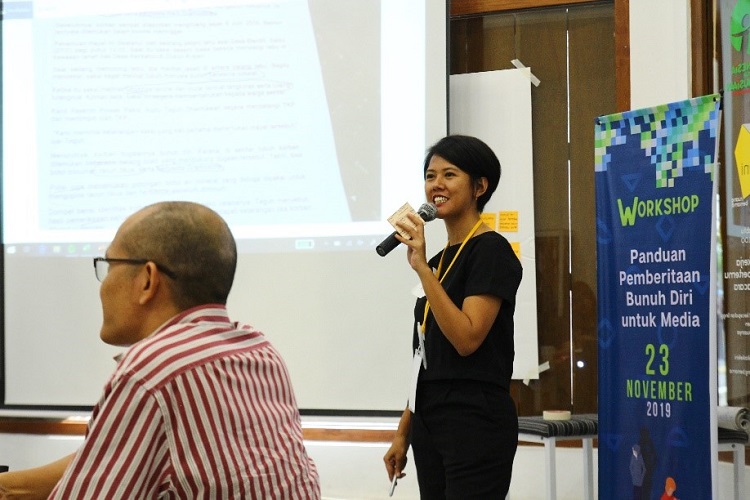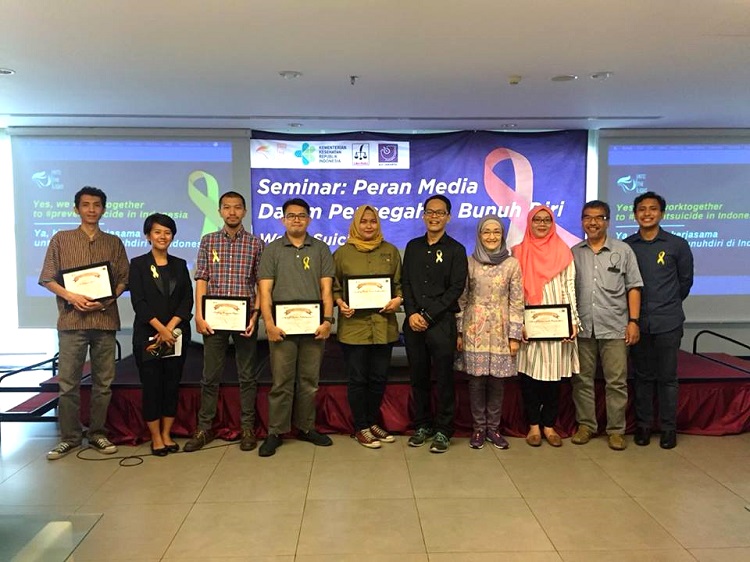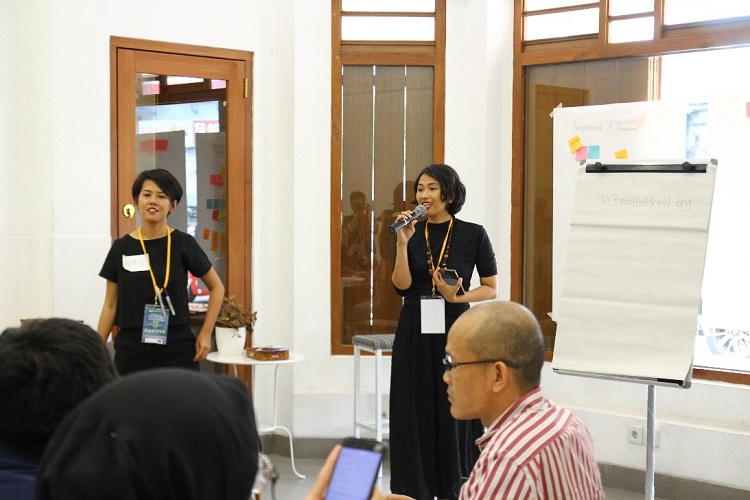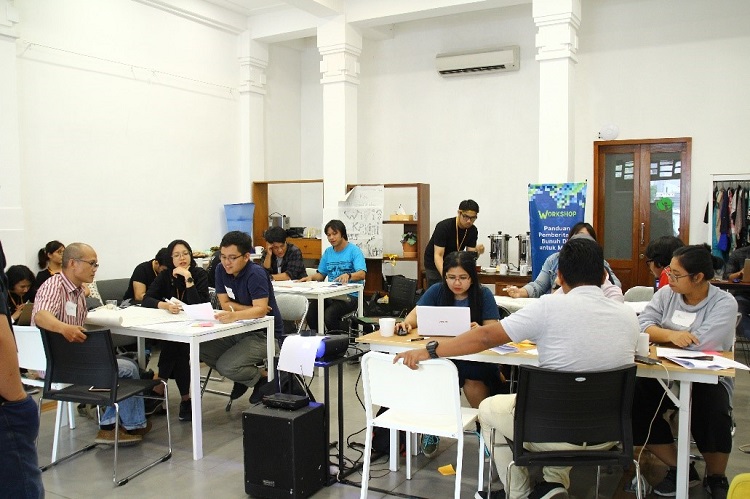Versi Bh. Indonesia
Suicide prevention advocates and journalists are changing how suicide is reported in Indonesia
Benny Prawira
In 2014, an Indonesian junior high school student died by suicide. Highly sensational media coverage followed. Several online news platforms mentioned his full name and the method he had used in the title of their news items, as well as his residential address. One journalist interviewed his local neighbourhood leader (ketua RT) who stated that the boy had been ‘influenced by Japanese manga’. Others pointed to the divorce of his parents as his main motivation. In addition to violating privacy and problematically simplifying the complexity of suicide, these reporting practices did not respect the grieving family. These reports did not adhere to the available guidelines from the World Health Organisation on reporting news about suicide.
In 2017, Indonesia experienced several waves of widely covered suicide deaths. It began with a suicide that was broadcast live on social media and continued with the widely watched video of two sisters attempting suicide. The suicide deaths of several local and international celebrities were covered repeatedly from the middle to the end of the year.
Even though the news coverage inspired some constructive public discussions, we also observed bullying, inappropriate jokes, and vicious judgements dominating conversations, which led many to believe that suicide is reckless, irreligious, selfish, immoral and cowardly. For survivors, comments on social media platforms were depressing, distressing, and stigmatising. The media, together with various social media platforms, is shaping attitudes towards suicide in harmful ways.
Something wrong
At this time, Into the Light Indonesia, a suicide prevention community involved in advocacy, research, and education, noticed that there was something wrong with the way suicide was covered in the Indonesian media. When we inquired how survivors of suicide attempts perceived these news items, they told us that they could relate easily to them and, worse, that their own thoughts of suicide were triggered. They also found the repetitive news coverage depressing. The explicit portrayal of suicide planted visions of the act in their minds. We concluded that these reporting practices were dangerous as they were potentially increasing the risk of copycat suicides (also known as the Werther effect).

We at Into the Light Indonesia thought that it was urgent to educate and encourage the journalists who cover suicide to follow appropriate guidelines. We were convinced that better ways of reporting suicide would inspire hope and recovery rather than horror, dread and drama. To realise this, we worked with several stakeholders from the Indonesian media to develop national suicide reporting guidelines that are relevant to the Indonesian context. To make sure that we did not interfere with press freedom, we collaborated with LBH Pers (the Legal Aid Institute for the press). They joined us for a discussion with the Indonesian Press Council in February 2018. Fortunately, the Press Council welcomed our initiative as they shared similar concerns on suicide news reporting.
A coalition
To make our project relevant for journalists, we invited AJI Jakarta (the Alliance of Independent Journalists of Indonesia, Jakarta Chapter) to become involved in August 2018. On that day, a coalition in support of suicide news guidelines was formed. In September, we received the backing of the Indonesian Ministry of Health to conduct a seminar on the role of the media in preventing suicide. We invited the Indonesian Linkin Park fan club to share their lived experience because many of them were affected by the sensationalised reporting of Chester Bennington’s suicide. We also invited Tirto.id, the online media platform which had the most sensitive coverage of suicide at that time. Yosep Adi Prasetya, at the time the director of Press Council, discussed the importance of suicide news guidelines. The seminar successfully promoted the importance of changing the way the Indonesian media cover suicide.
After the seminar, the Press Council involved the coalition every time they held discussions on the development of the suicide news guidelines. All media stakeholders, including online news portals, print newspapers, and television news programs were invited to provide feedback. The issue of privacy, for the deceased as well as their families, was raised, as were concerns about how to maintain in-depth coverage. Throughout these meetings, most media stakeholders agreed that guidelines were needed to inform journalists and prevent copycat suicides.

The coalition provided its final feedback on the draft during the March 2018 meetings. At the end of the month, the Indonesian Press Council published the guidelines, which not only promoted respect for the privacy of the deceased and their families, but also explicitly discouraged discussion of the method used in a suicide. The guidelines emphasised that, in most cases, more than a single causal factor is present, and that journalists should not present overly simplistic accounts. The guidelines include issues that are culturally relevant in Indonesia: it prohibits relating suicide to supernatural and superstitious elements.
Publishing the guidelines alone, however, is not enough to change the way suicide is covered in the news. We decided to educate journalists about the guidelines.
A workshop
In November 2019, on International Survivor of Suicide Loss Day, the coalition conducted a workshop for mid-career journalists, editors, and others. Agung Dharmajaya, representative of the Press Council, gave the keynote, and called for a national meeting of editors-in-chief to be organised. During the workshop, we discussed the role of the media in propagating the Werther effect and the Papageno effect (protection against further suicides). Gading Yonggar Ditya of LBH Pers reassured participants that the guidelines were not intended to violate press freedom and endorsed the educational role of the media. Widia Primastika of AJI Jakarta and Caecilia Tiara of CNN Indonesia discussed best practice in suicide news reporting. Both media organisations have strict policies on suicide coverage, including requirement that it be treated as a mental health condition and not as a crime or immoral act. We also invited people with lived experience to talk, and the new head coordinator of Into The Light Indonesia, Alfonsus Bayu Dirgantara, shared his experience of losing a friend to suicide and how the media had influenced his friend’s suicidal ideation.
In the final session, Venny, from Into the Light Indonesia, and Widia, from AJI Jakarta, facilitated a discussion on the application of the news guidelines. The participants were coached through the process of editing problematic news items into more ethical ones that adhere to the guidelines.

The workshop participants shared the challenges they faced in the field, particularly regarding the knowledge gap between journalists and their editors-in-chief, the pressure to write news items as soon as possible, the lack of knowledge of the guidelines by decision makers, and the difficulty of finding proper visual illustrations. They also presented several interesting ideas to develop procedural guidelines for suicide reporting for their own media outlets, asked the coalition to monitor the media, and encouraged more criticism of media outlets that did not adhere to the guidelines.
Far and wide
In addition to organising the workshop, we held a competition to encourage journalists to adhere to the guidelines. The coalition selected as many as 44 articles and videos related to suicide. The three winners came from diverse media platforms, including print, online and television. Even though the winners had not participated in the previous workshop, they successfully covered suicide in an ethical way because of information they had received from a colleague – demonstrating that organisational culture significantly shapes news reporting.
The journey of improving suicide reporting in the Indonesian media has only just started. The coalition must continue to provide insights to various media stakeholders. It also has to conduct further research and address more structural, systemic and cultural barriers that hinder journalists’ and media organisations’ adherence to the guidelines. Hopefully, by shifting media reporting, broader social attitudes towards suicide will change. Knowledge of the reporting guidelines alone is not enough to guarantee adherence. We also have to address the structures and policies in the media industry.
Benny Prawira (prawirabenny89@gmail.com) founded Into the Light Indonesia, a youth based group focusing on suicide and its prevention, in 2013. He is currently the advisor of the community. He obtained an MA degree in Psychology at Atma Jaya University in 2019.
